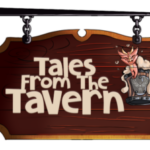By GamerMomLuna
Using “house rules” in a TTRPG is meant to be a way to make a game more fun for everyone at the table. They should be agreed on by the players and the GM so that everyone is aware that there’s been a change to the way the game is written, and hopefully everyone is in agreement with it.
Most tabletop RPG players know about the “Rule of Cool” – The player does something unconventional that isn’t written in the written rules of their chosen system, but the GM thinks it sounds awesome so they let it slide.This is a way of bending the rules in order to let the players have fun in a creative way the rules wouldn’t have otherwise allowed.
Other house rules that exist have to do with not allowing exploitation of a system in a game if the rules are ambiguous. Yet others can encourage players to use boones when they have them. One DM shared, “In 5e, I give each player Inspiration at the start of each session. They can only ever have one at a time, but I think that fact makes them a bit less reserved in using them. I’m more likely to hand them out once they’ve spent the one they had as well, as opposed to coming in without it to begin with. They don’t carry over [from] session to session as well of course.” Another DM noted that in his podcast, “When someone rolls a perception check, and it’s lower than their passive perception, the player is allowed to just take their passive. Unless they roll a nat one! Then they have to take the one.”
Common house rules gamers often come across involve character creation – specifically how one chooses the numbers for their Ability Scores (usually in D&D or Pathfinder). DnDBeyond mentions randomly rolling for scores using 4d6, and keeping the highest three numbers. It also references a point-buy system, where players have 27 points to spend to increase their scores. But others prefer the standard array where players have a predetermined pool of points that you have that you can allocate to your ability scores: 15,14,13,12,10, and 8. Some DMs allow players to roll 4d6, reroll 1s, then take the three highest. Yet another DM mentioned that they roll for scores by using 2d6+6!
House rules can be ubiquitous, though. People play games for so long they forget (or maybe never knew) the difference between the house rule and the actual rule. They are great when done well and important to a lot of groups since a lot of different groups will have different needs.If you want to understand a system and be able to discuss it clearly, it is important to play it as written for a while and give mechanics or ideas a chance before tossing them. Some groups will just house rule everything until it becomes D&D and miss the opportunities a new system provides.
Do you enjoy using house rules? Why or why not? What are some house rules you have at your table? Leave us a comment below and tell us your thoughts!






